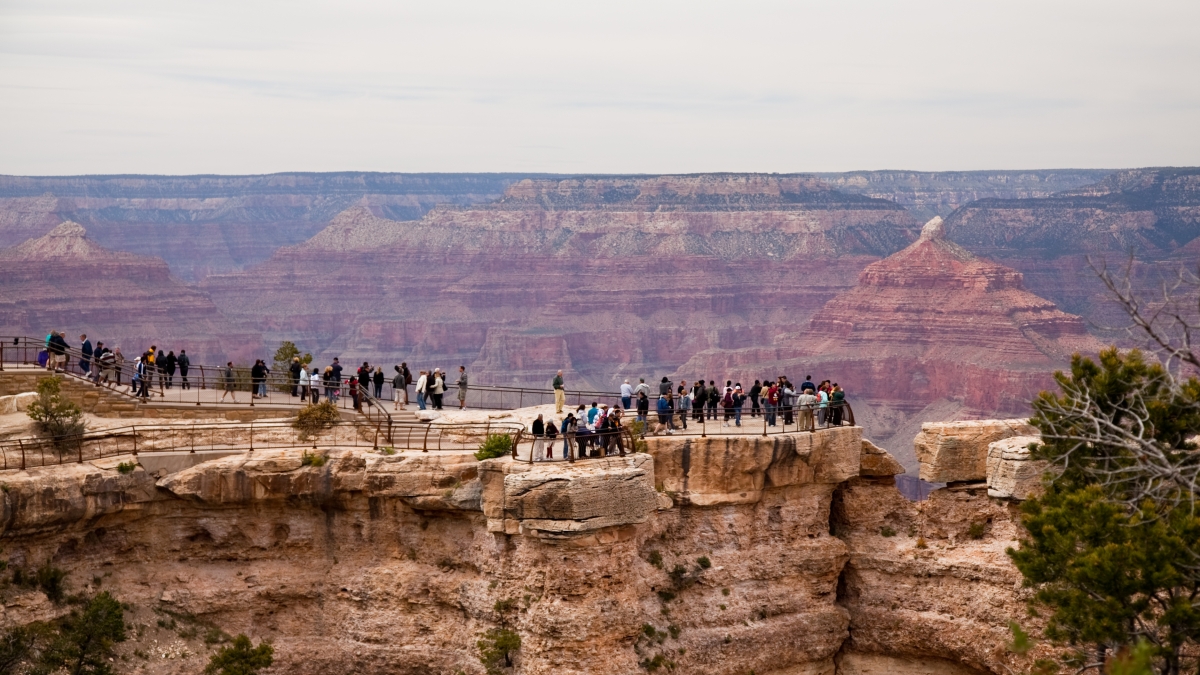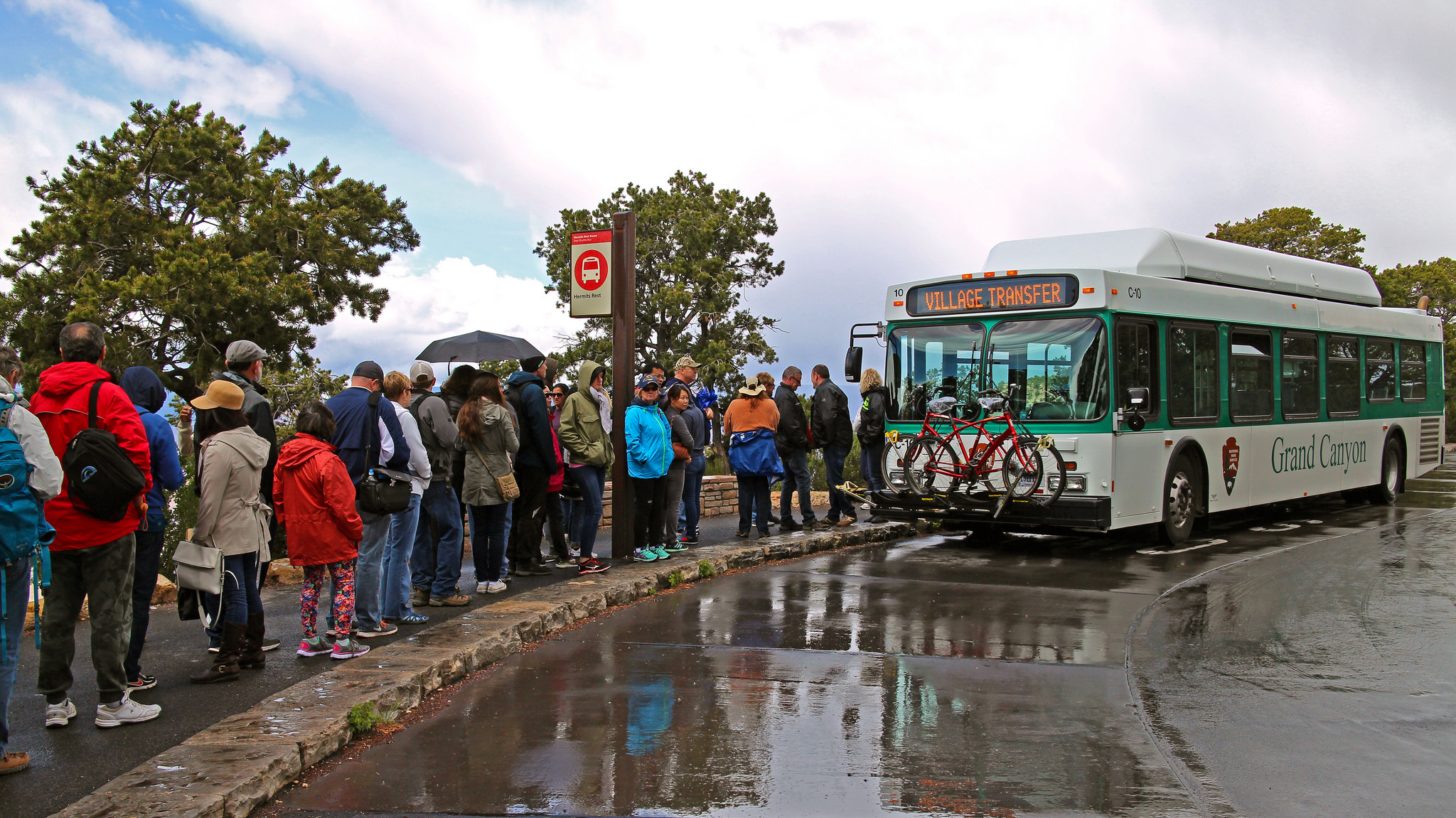Editor's note: This story is part of an ASU Now series celebrating the centennial of the Grand Canyon National Park.
Grand Canyon National Park draws visitors from all over the world to bask in its beauty, making it not only a precious ecological resource to cherish but also a major economic driver for the state of Arizona.
Balancing the twin missions of access and preservation is key to its future, according to experts at Arizona State University.
“When you think about the Grand Canyon itself, there’s so much to it,” said Megha Budruk, an associate professor in the School of Community Resources and Development in the Watts College of Public Service and Community Solutions.
“There’s something for geologists, there’s something for artists, something for historians, the tourists,” said Budruk, who teaches a course called Wilderness and Parks in America.
“The park is physical, but the meanings we ascribe to it allow people to connect to it in different ways,” she said.
And many more people are connecting to the Grand Canyon. The park had 6.2 million visitors in 2017, up 42 percent from a decade earlier. The month of November 2018 had 10 times more visitorsAbout 410,000 in November compared with about 38,000 in 1919. than the entire year of 1919, when Grand Canyon National Park was formed.
All those tourists generated $648 million — along with 9,800 jobs. The total economic benefit to Arizona, according to the National Park Service, was more than $900 million.
In fact, the park is so important that Gov. Doug Ducey issued an executive order in early 2018 calling for the Grand Canyon to remain open in the event of a federal government shutdown. When the government did shut down in late 2018, the state’s tourism and parks offices paid to keep day-to-day operations running.
Along with the revenue, tourism brings crowds requiring roads and parking lots and toilets and maintained trails. The National Park Service, in a 2017 report, estimates that the backlog of maintenance and repairs totals nearly $12 billion nationwide. About $330 million of that is needed at the Grand Canyon. Photo by Michael Quinn/National Park Service
More popular than ever
Christine Vogt, a professor and director of the Center for Sustainable Tourism, and Budruk have done research on the Grand Canyon’s economic impact in the region.
“It’s very clear there’s a prominent route starting in Las Vegas and doing the North Rim and coming around, including the Grand Canyon and Navajo parks and back up to Utah,” Vogt said.
“The whole region, with Las Vegas and its marketing machine, is getting a lot of international visitors,” she said. “The Grand Canyon, Zion, Monument Valley, Moab — all are getting increased tourism.”
Budruk said the spillover effect is felt throughout northern Arizona, which includes Canyon de Chelly, Montezuma Castle, Navajo, Parashant, Pipe Spring, Sunset Crater Volcano, Tuzigoot, Walnut Canyon and Wupatki national monuments, Glen Canyon and Lake Mead national recreation areas, Hubbell Trading Post National Historic Site and Petrified Forest National Park. The Navajo Nation is home to four tribal parks, including Monument Valley, and there are several state parks in the Flagstaff area.
“What we found is that most visitors did not have the national monuments as their primary destination but were stopping over as part of their Grand Canyon visit,” Budruk said.
But along with the revenue, all that tourism brings crowds who require roads and parking lots and toilets and maintained trails. In fact, all of the national parks are badly in need of infrastructure work. The National Park Service, in a 2017 report, estimates that the backlog of maintenance and repairs totals nearly $12 billion nationwide. About $330 million of that is needed at the Grand Canyon, mostly for water systems and trails.
“The recent shutdown shed light on what it takes to keep a park open and friendly and clean and safe,” Vogt said. “But over the course of my professional time, the backlog of infrastructure and money needed to run these parks has not changed.
“There needs to be a more significant mechanism for paying for the management and enhancing the overall park infrastructure, which then improves the park experience.”
Adding infrastructure with conservation in mind
Vogt said that one change that likely will continue is the increased role of advocacy groups like the Grand Canyon Conservancy.
“They play a very important partner role with the National Park Service in fundraising and in helping to pay for infrastructure and improvements,” she said.
“They’ve supplemented and in some places have taken over the guide and interpretation programs.”
Among the Flagstaff-based nonprofit’s projects: replacing light fixtures in the park to preserve dark skies, restoring and maintaining trails and completing renovation of the Desert View Watchtower and murals. The Grand Canyon Conservancy also runs a Field Institute that offers guided day hikes, backpacking trips, cultural classes and certification courses.
Vogt and Budruk said that the Grand Canyon has done a good job of trying to balance welcoming big crowds while mitigating their effect on the environment. One solution was the redevelopment of the South Rim a few years ago to add shuttle buses and limit driving and parking.
In 2010, the park approved a climate change action plan, warning that a hotter climate could lead to changes in weather and animal habitats, more insects, an increase in frequency and intensity of wildfires and floods and changes to water flows in the Colorado River. The sale of water bottles was eliminated, solar panels were added to the visitors center and the park increased recycling and added a system to reuse wastewater for toilets and irrigation.
Another way to control crowds is to keep the North Rim open only part of the year, which allows it to rest. The lack of infrastructure, including roads and personnel, keeps the crowds down and allows visitors a more solitary experience.
Technology, including social media and wildlife cams, have been cited as a driver of tourism at the national parks, but Vogt said that the Grand Canyon has to consider limiting technology to protect the environment.
“I think a big issue is dark skies and noise pollution. Regulating drones and helicopters is important,” she said.
“I don’t think people go to the parks to have technology in their faces. One reason you go to a park is to step away from that,” she said.
Managing the park on the macro
Michelle Sullivan Govani is a PhD student in School of Life Sciences who is studying preservation across the national park system. Her research project is examining the National Park Service mandate to preserve natural resources for future generations. She has interviewed top agency officials, administrators and park rangers from around the country to see what preservation means to them and how it has changed since the agency was formed in 1916.
“In the beginning, it was about these spectacular scenes and feeling emotionally and mentally invigorated,” she said. Over time, the mission has evolved.
“It’s not that scenery isn’t still important, but it’s not what defines preservation or the park service’s mandate any more, as they would tell it,” she said.
“They’re more concerned with ecosystems and with ecological processes.”
So now, just like each park is embedded in an economic network, each park also must be managed as part of a regional ecosystem.
“Ecosystems aren’t defined by the political lines that parks are defined by, so how do we work outside those boundaries to make sure we’re preserving ecosystems as they function in reality and not just for the scenes they provide to us?” Sullivan Govani said.
“You see that in the way they’re managing parks across boundaries. They’re working with the Bureau of Land Management, with the U.S. Forestry Service and with private landowners.”
Using science to inform the management of the park system has always been part of balancing competing interests, she found.
“The thing about National Park Service history that’s fascinating is that you see all these starts and stops with regard to how they incorporate science-based management. It’s not that whoever is in charge doesn’t support research, but priorities differ and there’s a limited budget,” she said, noting that customer service is always a concern.
Going forward, it also will be important for the Grand Canyon, as part of the National Park Service, to be more representative of the American public. The agency released a report in 2018 that revealed that its workforce is 81 percent white, 62 percent male and 42 percent over the age of 50.
“It helps to have an agency that reflects the American population so they see somebody like themselves and feel that, ‘This is a place for me too, where I am welcomed,’” Budruk said.
Top photo: Crowd of tourists gather at an overlook at the Grand Canyon. Photo courtesy of Getty Images/iStockphoto
Audio interview by Karie Dozer.
More Environment and sustainability

5 takeaways from the Society of Environmental Journalists conference at ASU
Last week, Arizona State University welcomed academics, experts and journalists who focus on environmental and climate issues for the Society of Environmental Journalists' 34th annual conference.…

The mighty impact of insects
By Meghan Finnerty and Megan NeelyArizona State University has a lot of insects — and for good reason. A colony of researchers is studying how social insects can be used as tools to answer…

Majority of American religious leaders silently believe in climate change, ASU study shows
Many Americans turn to religious leaders for guidance on matters of faith and morality.With this in mind, a new study, led by a researcher from Arizona State University, suggests that congregations…



